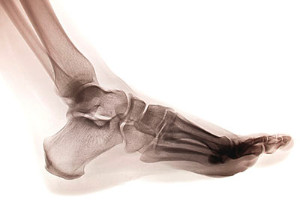
Connellsville

 Foot conditions such as flat feet and loose joints are also seen as biomechanical abnormalities of the foot. These abnormalities can also be seen as risk factors for certain foot conditions such as hallux valgus. For long term treatment of these conditions, correction of these abnormalities is required. Several options include wearing appropriate footwear, foot orthotics, toe spacers and bunion cushions. Maintaining proper mobility of the lower-limb joints will make way for stable lower-limb biomechanics as well.
Foot conditions such as flat feet and loose joints are also seen as biomechanical abnormalities of the foot. These abnormalities can also be seen as risk factors for certain foot conditions such as hallux valgus. For long term treatment of these conditions, correction of these abnormalities is required. Several options include wearing appropriate footwear, foot orthotics, toe spacers and bunion cushions. Maintaining proper mobility of the lower-limb joints will make way for stable lower-limb biomechanics as well.
If you have any concerns about your feet, contact Dr. Arnold Tarpley, Jr. from Tarpley Foot and Ankle Center. Dr. Tarpley can provide the care you need to keep you pain-free and on your feet.
Biomechanics in Podiatry
Podiatric biomechanics is a particular sector of specialty podiatry with licensed practitioners who are trained to diagnose and treat conditions affecting the foot, ankle and lower leg. Biomechanics deals with the forces that act against the body, causing an interference with the biological structures. It focuses on the movement of the ankle, the foot and the forces that interact with them.
A History of Biomechanics
Modern technological improvements are based on past theories and therapeutic processes that provide a better understanding of podiatric concepts for biomechanics. Computers can provide accurate information about the forces and patterns of the feet and lower legs.
Understanding biomechanics of the feet can help improve and eliminate pain, stopping further stress to the foot.
If you have any questions please feel free to contact one of our offices located in Uniontown, and Connellsville, PA . We offer the newest diagnostic and treatment technologies for all your foot and ankle needs.
Read more about The Importance of Biomechanics in Podiatry